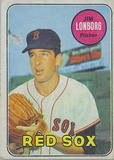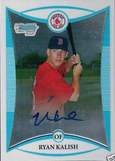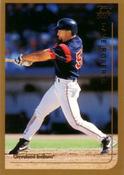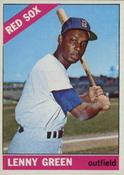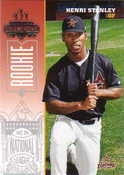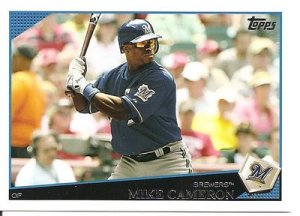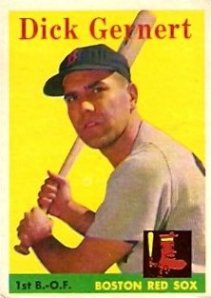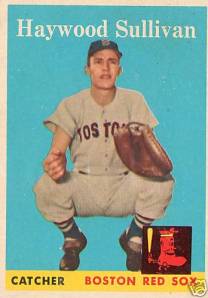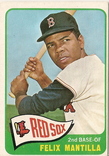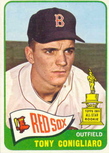Friday’s Favorite – 1959
Moving into year three of the Friday’s Favorite series, like the previous year not an
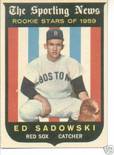 overwhelming choice of attention-getting cards. For the Topps set I will have to go with this one of catcher Ed Sadowski, poised to receive a pitch after signalling for it to be low and away to a right-handed batter – though the hat he’s wearing in the picture betrays a sense of realness, almost as someone had come by and plopped it quickly on his head just before the picture was snapped, so precariously does it rest there. Anyhow, delightful card nonetheless and perhaps to be the first or one of the first to a 1959 collection of which currently the cupboard is bare.
overwhelming choice of attention-getting cards. For the Topps set I will have to go with this one of catcher Ed Sadowski, poised to receive a pitch after signalling for it to be low and away to a right-handed batter – though the hat he’s wearing in the picture betrays a sense of realness, almost as someone had come by and plopped it quickly on his head just before the picture was snapped, so precariously does it rest there. Anyhow, delightful card nonetheless and perhaps to be the first or one of the first to a 1959 collection of which currently the cupboard is bare.
That said, my real favorite from this year goes to one of the ones Fleer issued – this was the year it signed Ted Williams to an exclusive contract and did an entire series just on his overall career and outside interests and activities. Three of those cards, in particular, I am targeting to someday acquire: Nos. 71, 72, 73, titled Ted’s hitting fundamentals.
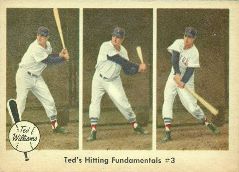
No. 73 is my favorite of those three, showing a four-clip scenario as he begins to bring his bat through the hitting zone. These strike a cord, having read works by or about him, and never tire about listening to his approach to hitting, so contagious is his enthusiasm for it. Most famous to his approach is, “Get a good ball to hit.”
